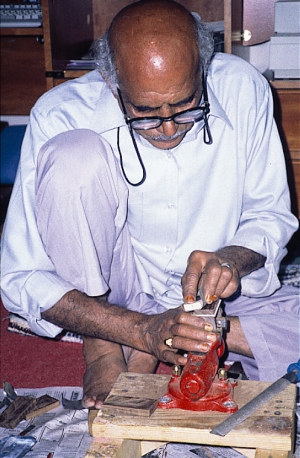Jiwari
Today I added a small article about “doing jiwari” to the maintenance page. This seems for so many an insurmountable task, for others it remains a sacred secret on which sometimes insiders make profit by doing or pretending that this is only to be touched by a lucky few.
Of course it is not an easy task to do, and surely it is not a good idea to experiment with your one and only finest staghorn jiwari immediately but look out for a piece of cheap camel bone, leftover ebony or fiber and make your own ghodi from scratch. It might take some time, but once you succeed to create a good sound with a self-made jiwari… a new world opens.
Doing jiwari is a question of practice. No written rules exists on how where and when to start filing or sanding. Just take your time to gently create a slow but steady, exponentially inclined curve. At regular times, create a finishing stroke with fine sandpaper and try out on your instrument. Remove it again and work further, step by step.
If you should ever see the jiwari which came first out of my hands 15 years ago, I think you will never alow me to even come close to your sitar… 😉
Feel free to read the article, and succes!!


Thank you for this excellent post. I had a friend at Aarons guitar (vicksburg, Mi) Rework my Jiwari ans Sawari… They came flat, bought it used, was a good deal yet I knew it could sound much better and now it does, I think it still needs some further tweeks yet it is not so dead sounding and I can smile as I practice, Im a new student and any sitar would do yet to not have the great sound was a downer… Your post really helped pull the sound out of it and I ordered that book you mentioned so we can look into what else we might do to really amplify the resonance…
So glad i found this…
Thanks!
Well, Jiwari was reworked, Im so new to the instrument, I am unsure if a Sawari is a peice of it.
We re-worked the bone saddles… to look more like the illustration and it came to life!
HUGS!